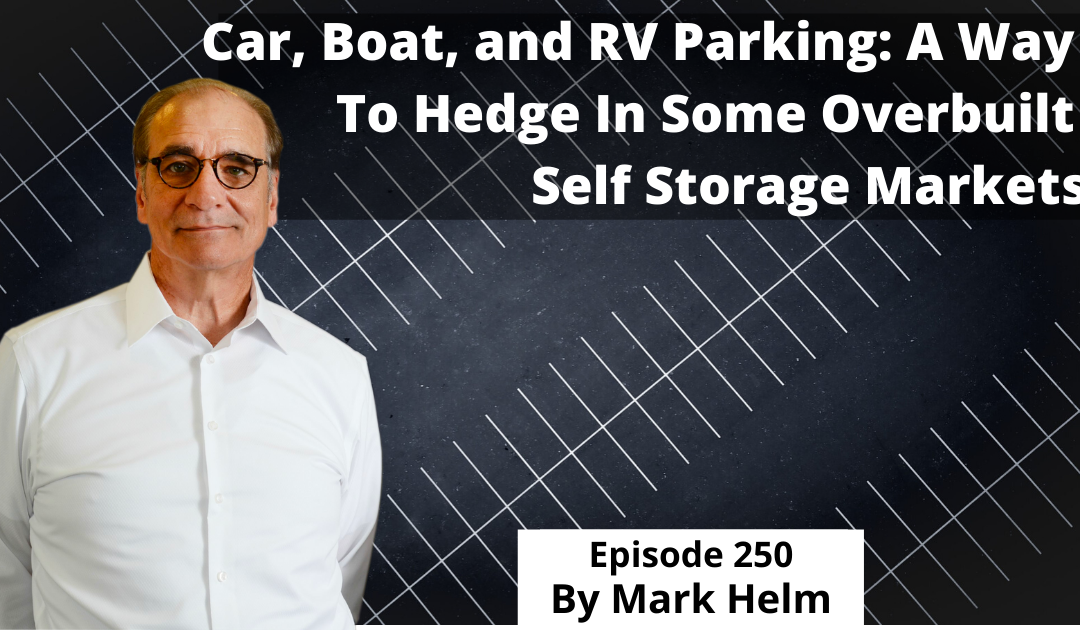In this age of increased self storage per capita in many submarkets across the nation, boat and RV parking may be a way to enter or expand.
I have been hesitant to embrace this method and have fallen back on it when necessary.
We had a two-building conversion project in one market where we finished building one as self storage, and building two was going to be a mixed-use between self storage and an office/warehouse tenant.
When a REIT opened in the submarket, we decided not to race to the bottom in rents and to run building two into indoor parking and outside around it. The project did very well, but I related to it as a fall back play.
But I learned a lot in the process about car, boat, and RV parking along the way in our “fall back” play.
Benefits of Car, Boat, and RV Parking
The first significant benefit I learned was the market area is different.
We were in a metropolitan market of 1 million people, and the extreme lack of indoor parking allowed us to pull customers from all over the market area. The usual 3 to 5-mile radius didn’t apply here.
We also rented some self storage to those same people. Not enough to justify a project, but it is like having a truck rental business, you end up renting one to three units per month or so.
The next benefit we saw was that the household income for these customers was usually higher. These are the expensive toys of people who like to play for the most part. These people pay their bills and typically stay longer than an average unit customer.
In most cases, parking tends to rent up faster than self storage, especially if you are in a market where there is a limited supply. Many markets have a scarcity of this or that type of parking, like covered RV, or indoor for expensive cars.
It’s harder to figure this out, and we often felt like we were guessing, but it seemed to work.
Challenges of Car, Boat, and RV Parking
Car, Boat, and RV Parking tend to be very land-intensive.
I am not an expert yet on this topic, but my experience is you usually get around 48% to 52% efficiency.
So, if you have an acre of land, you will get about 22,000 square feet of it to generate parking income.
The average enclosed unit size for RV parking, either undercover or in an enclosed unit, is 560 square feet (14 x 40). So, you can see that’s about an average of 35 to 39 spaces per acre for boat and RV parking.
If you are building oversized storage units, you are going to get even less per acre, but it can average out because you can usually charge more.
The ROI is not as high as self storage, but if land costs are lower, it can be profitable and have a good holding income until more intensive self storage cans be developed to meet market demand in the future.
Conclusion
This is a strategy we are actively utilizing to expand in some targeted markets for us. We are making sure our feasibility report vendors can quantify parking income potential and assist us in designing the right project.
Car, Boat, and RV Parking have different benchmark numbers than storage, but together, they can make an excellent project.



